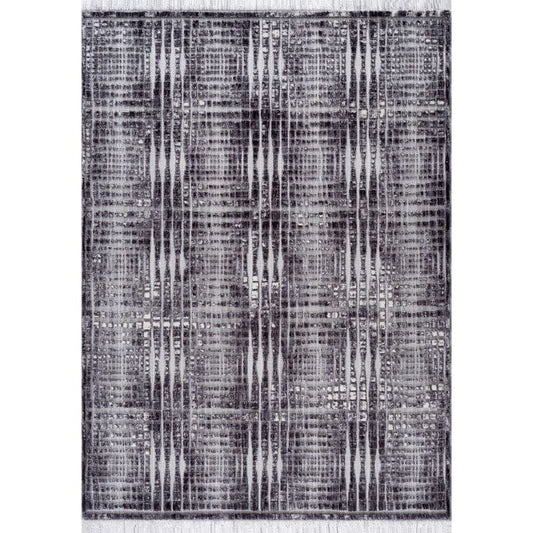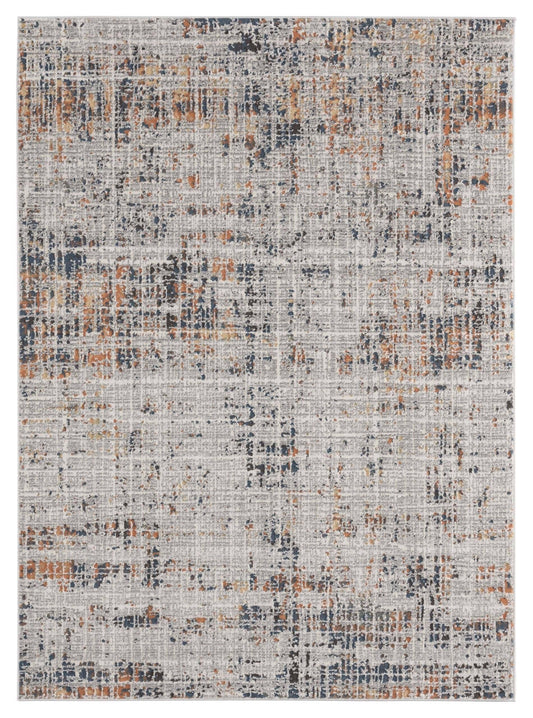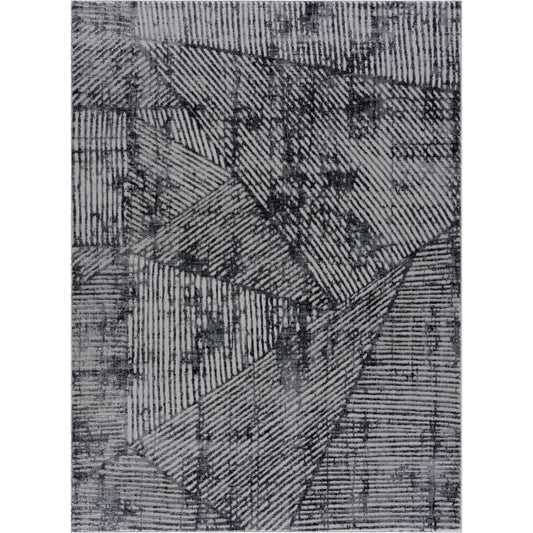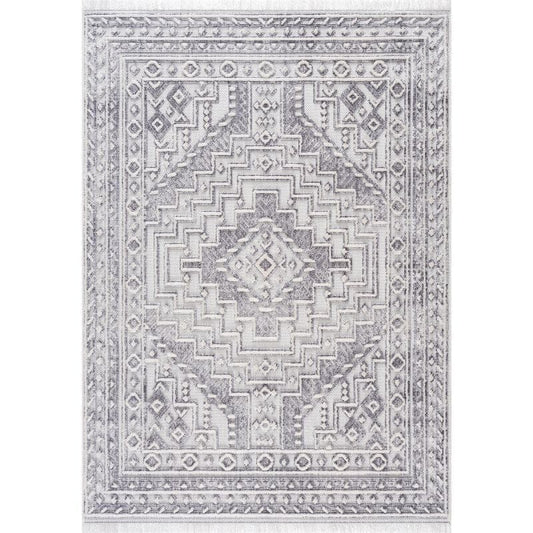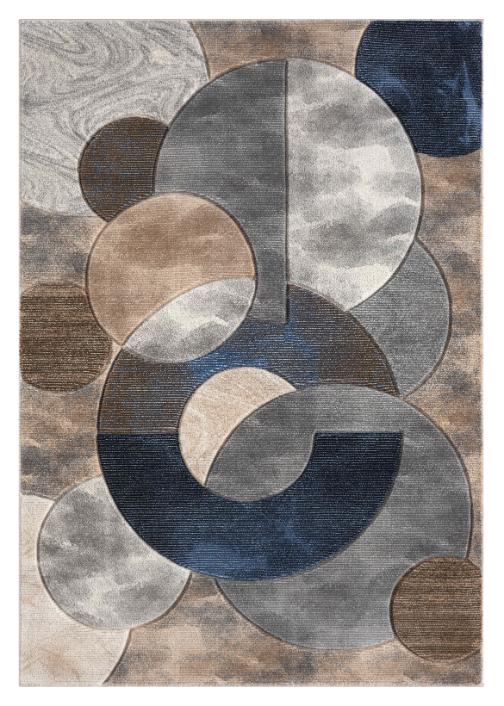Rugs are the ultimate element of a home interior and add warmth, style, and comfort to any space. However, what often goes unnoticed is the importance of using a rug pad underneath.
Rug pads might seem minor but serve a multitude of purposes that go beyond mere aesthetics. Enhancing the longevity of your rugs, these pads act as a protective barrier between the rug and the flooring to prevent premature wear and tear. By absorbing the impact of foot traffic and reducing friction, rug pads help maintain the integrity of your rug fibers, ensuring they remain vibrant and intact over time.
The decision to use a rug pad is a small investment that yields significant returns in terms of rug longevity, safety, and comfort. Let‘s explore why rug pads are essential and how you can choose the right types.
What Is A Rug Pad And What Is It Used For?
A rug pad is a cushioned underlay that is intended to be positioned under area rugs. It offers several useful advantages that enhance the aesthetical condition of both your carpets and your living area. Rug pads are typically composed of materials like rubber, felt, or a combination of both. These pads are also available in various thicknesses and sizes to accommodate different rug types and flooring surfaces.
Rug pads are usually used to prevent slipping and sliding, offering stability to your rugs on various flooring types such as hardwood, tile, or laminate. This protects not only your household but also your priceless rugs from possible damage that can be caused by frequent movement. The added cushioning also contributes to a more comfortable walking surface that enhances the overall enjoyment of your living space.
How To Choose The Right Type Of Rug Pad By Material?
Rug pads come in a variety of materials, each of which has a distinct function and can accommodate different kinds of rugs and flooring. When choosing the best rug pad for your requirements, it is important to comprehend these materials. Let’s explore the most common materials used in rug pads:
Felt Rug Pads
Felt rugs are popular because of their protective and cushioning properties. These pads offer a gentle yet sturdy layer between your rug and flooring. They are frequently constructed from a blend of natural and synthetic fibers. For hardwood and laminate floors, felt pads are perfect because they provide a soft barrier against potential dings and scratches.
Rubber Rug Pads
Rubber rug pads are an ideal consideration because of their non-slip qualities, which make them a great option for areas with heavy traffic. These pads are made of synthetic or natural rubber that securely fasten your rug to the floor to avoid mishaps and provide stability. Stone and tile floors are among the many flooring types that rubber pads are appropriate for.
PVC Rug Pads
PVC rug pads are a durable and moisture-resistant option. They work well in areas prone to spills or dampness, such as kitchens or bathrooms. PVC pads create a barrier that protects your rug from moisture seeping through to the floor.
Natural Fiber Rug Pads
Natural fiber rug pads are a sustainable option as they are usually constructed from jute or wool. These are a biodegradable and sustainable choice for people who value eco-friendly goods. These pads provide moderate cushioning and can be used on a variety of flooring types.
How To Choose The Right Type Of Rug Pad By Size?
Choosing the right rug pad by considering the size involves both the dimension and specific needs of the area of application. By carefully considering the size, choose the right rug pad that enhances the functionality, comfort, and longevity of your rug. Let's talk about the two most common rug sizes;
- 8x10 Rugs: Choose a rug pad that is slightly smaller than the size of your 8x10 rug. This allows the rug pad to remain hidden beneath the rug.
5x8 Rugs: Depending on the location of the 5x8 rug, choose a rug pad thickness that aligns with your comfort preferences. Consider rubber-backed, felt, or a combination of both that can work well.
On which rugs are rug pads most commonly used?
Rug pads are most frequently used to improve the performance, durability, and general functionality of a range of rugs. Here's a detailed exploration
Area Rugs
Rug pads are frequently used under area rugs. These provide an extra layer of cushioning and prevent the rug from slipping or sliding. These rug pads protect the underlying floor.
Hardwood Floors
Rug pads are essential for rugs placed on hardwood floors. These pads protect the fibers of the rug from scratching or causing damage to the wood surface.
Traditional Rugs
Traditional rugs have coarse backing that may potentially scratch or damage hardwood floors. Rug pads act as a protective barrier and prevent any abrasive contact with the flooring.
Modern Rugs
Rug pads are crucial in preventing slippage of modern rugs. They add a layer of cushioning, making standing and walking on the rug more comfortable
Carpets
Rug pads are effective in preventing smaller carpets from shifting or sliding. This is especially important in high-traffic areas or homes with active individuals and pets.
5 Reasons Why You Need to Use A Rug Pad
Beyond mere convenience, rugs pads are a versatile and essential accessory that often plays a behind-the-scenes role in preserving the beauty and functionality of your rugs. There are several reasons to incorporate ru pads into your home decor. Here are five compelling reasons why rug pads are a necessity for both the well-being of your rugs and the overall safety and comfort of your living space.
Enhanced Rug Longevity
The main benefit of using a rug pad is that it increases the lifespan of your carpets. Serving as a barrier of defense between the flooring and the rug, rug pads lessen friction and absorb foot pressure. By incorporating rug pads as a preventive action, you can delay the onset of wear and tear and maintain the integrity and brightness of your rug's fibers over time. Investing in a rug pad is a great way to protect your rug from wear and tear and prolong its value as a beautiful accent piece in your home.
Enhanced Safety
Rug pads' offer non-slip qualities that securely fasten your rugs to the floor. A safe rug not only lowers the possibility of mishaps but also gives all members of your family a steady walking surface, making your house a safer and cozier place to be. This is particularly crucial in homes with kids and pets or busy areas.
Floor Protection
Rug pads not only protect your rug but also your flooring. Whether your floor is made of hardwood, tile, laminate, or carpet, constant movement and friction can wear down the surface. As a buffer, a high-quality rug pad lessens impact and guards against scuffs, scratches, and other damage. This dual protection keeps your flooring and rug in top condition while preserving the visual appeal of your living area.
Comfort and Cushioning
In addition to being functional, rug pads enhance the comfort of your living areal. A rug pad offer extra layer of cushioning that makes the floor more comfortable to walk on. This is especially helpful in rooms like the living room or bedroom where you spend a lot of time. The extra comfort makes your house a more welcoming and enjoyable place to be, which increases your enjoyment of it overall.
Noise Reduction
By absorbing sound, the rug padding lowers noise levels and makes your house feel calmer and more peaceful. This is particularly helpful in multi-level homes, shared living areas, and apartments where noise control is crucial to a peaceful living atmosphere.
Disadvantages Of Not Using Rug Pad
While rug pads may seem like an optional accessory, neglecting to use them can lead to various drawbacks that impact both the longevity of your rugs and the safety of your living space. Here are some of the major disadvantages that may arise when this crucial necessity is overlooked.
- Premature wear and tear: When rugs are placed directly on the floor, rugs are subjected to constant friction and pressure from foot traffic that results in fiber deterioration, fading, and diminished aesthetics.
- Slipping and Sliding Hazards: On most floor surfaces, rugs without rug pads are more prone to slipping and sliding. This poses a significant safety hazard.
- Floor Damage: by neglecting rug pads, you may experience floor damage with the constant movement and friction between the rug and the floor.
- Lack of Comfort and Insulation: Without a rug pad, your rugs may feel flat and less comfortable underfoot, especially in areas where you spend a significant amount of time.
What Can I Use Instead Of Rug Pad?
Rug pads are designed to provide essential benefits for your rugs. However, there may be instances where you find yourself without a traditional rug pad. You can consider alternative options that can be used in place of rug pads. Use a carpet tape or double-sided tape to prevent your rug slippage. For your small rugs, apply non-slip underlays that adhere the rug and floor to prevent slipping. Plus, you can place furniture grippers or pads under the corners of your rug. However, it is important to note that while these alternatives may offer temporary solutions,
Rug Gallery offers you a meticulously selected range of rugs that are not just floor coverings but true works of art. Take your first step in transforming your living space with a touch of sophistication.

